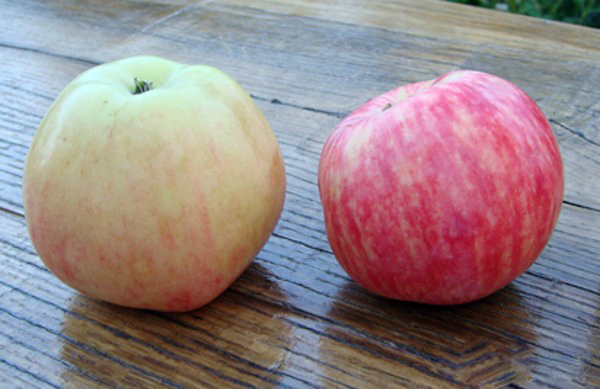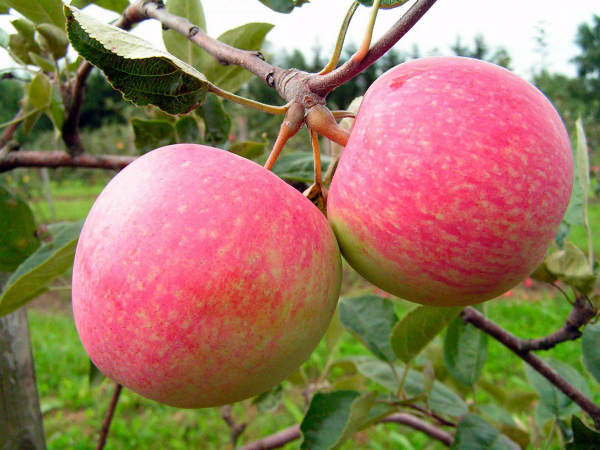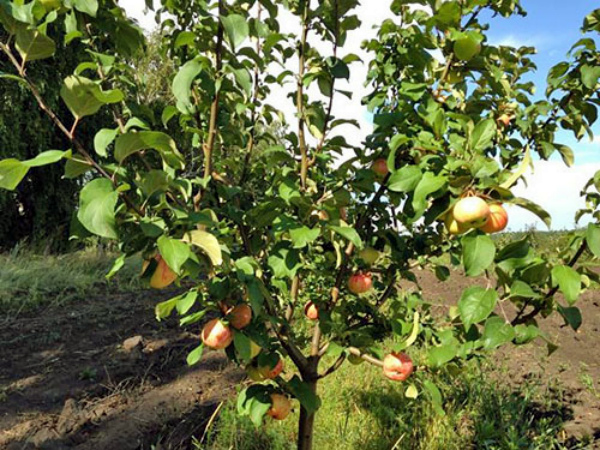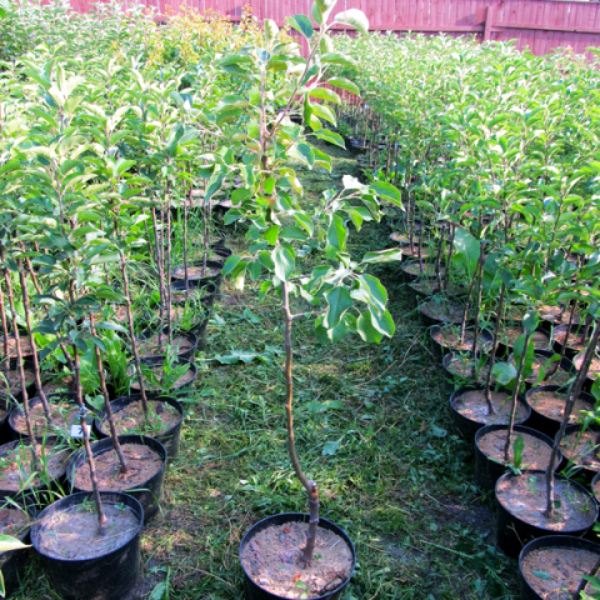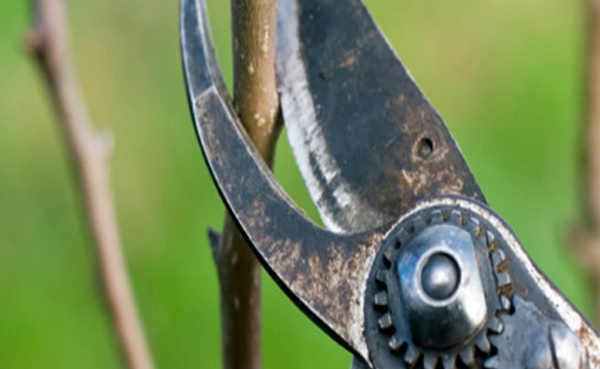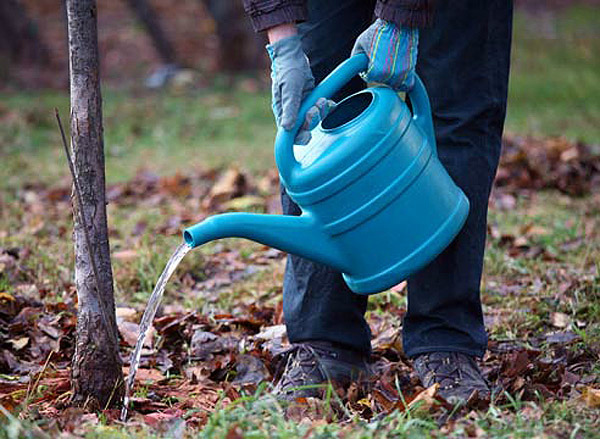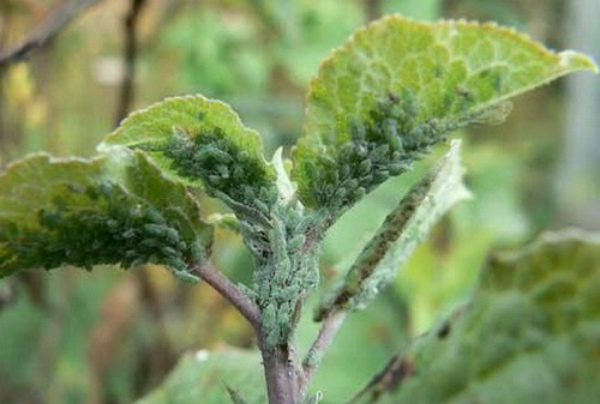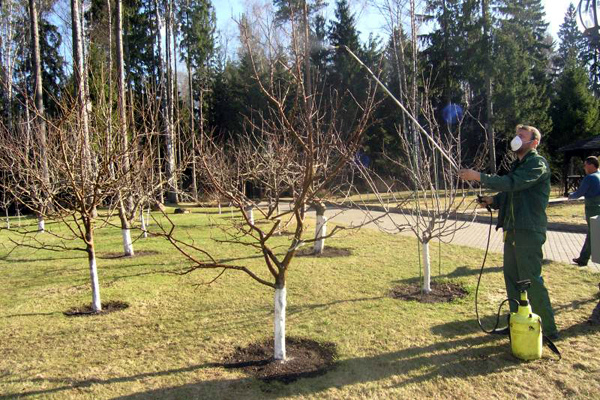Apple tree Grushovka Moscow: description of the variety and cultivation features
Content
Description and characteristics
"Grushovka Moskovskaya" belongs to the early summer varieties of apples - its fruits ripen by mid-August, and since ripening does not occur simultaneously, the harvest period is delayed until the end of the month. Apples "Grushovka" have a very bright sweet and sour taste and wonderful aroma, but only while they are fresh. The shelf life of the fruits is rather short - a maximum of 1 month. After this time, the pulp becomes loose and loses its taste, so apples should be consumed or processed as soon as possible.
The short shelf life is perhaps the only drawback of the variety, because its other characteristics are very high. So, apple trees have good winter hardiness (they can survive temperatures of -50 ° C without problems). Disease resistance is average - they can be affected by a fungus, but this deficiency is compensated by the ability to quickly recover. Trees of this variety are particularly durable - an apple tree can live for more than 50 years without reducing yield.
Fruiting of the Grushovka Moskovskaya apple tree begins quite early, at 3-4 years of age, and already in the first year it amazes with its yield - up to 10 kg of apples are removed from one young tree. The total yield of the variety is high, but it appears periodically (after a year). In a productive year, about 180 kg of fruit can be obtained from an adult tree. The variety is not grown for commercial purposes, since it is little stored and poorly transported, however, it is in good standing among gardeners and summer residents, due to its unpretentiousness and good yield.
The apple tree Grushovka itself is sterile - for the formation of the ovary, it needs a pollinator with the appropriate characteristics. It should be the main variety, not a hybrid. It is also important that the timing of flowering of both apple trees completely coincides, and that the pollinating variety is adapted to a specific area.
High own characteristics of “Grushovka” contributed to the fact that it was used as a rootstock for breeding new varieties, such as “Siberian souvenir”, “Early Grushovka”.
Appearance
The apple tree of the Grushovka Moskovskaya variety is distinguished by its large (6–8 m in height) size and a dense, well-branched crown. A characteristic feature of the crown is that it constantly changes its description. While the tree is young, the crown retains a pyramidal shape, but becomes more spreading with age. By the age of 10, the tree already has a rounded, almost spherical crown with drooping branches. During all periods of life, the density of the crown remains very dense.
The bark of the apple tree has an original brown color, with an orange or yellowish tint, and young shoots, as well as seedlings, are colored more intensely (almost dark cherry).The branches are smooth, round in cross section, with multiple annelids, which are much darker in color than the branches and slightly pubescent. The leaves are large, elongated, elliptical, with small notches along the edge. The color of the leaves is green, sometimes with a slight yellowness. Adult leaves are smooth, with stipules; young leaves are pubescent. The buds are pale pink, after flowering they become white with a slight pinkish tinge.
The fruits of “Grushovka” are small or medium-sized (60–100 g), in good conditions they can gain maximum weight of 120 g. The peel of apples is thin, smooth, with a slight shiny bloom. The color of the fruit is distinguished by a special multicolor: from greenish-yellow to rich yellow, and even reddish color with all kinds of strokes, specks covering one side of the apple. The pulp of ripe fruits is creamy or slightly yellowish, sometimes with red blotches, when overripe it darkens and becomes loose.
Video "Moscow Grushovka"
This review will introduce you to the Grushovka Moskovskaya apple variety.
Breeding history of the variety
The variety "Grushovka Moskovskaya" has been known for more than two hundred years and it is believed that it was obtained by natural selection - that is, it was formed in the process of wandering through the territories of the Black Earth Region, the Urals, and even Siberia, since it perfectly tolerated severe winters. Throughout its history dating back centuries, it was improved by popular efforts even before the famous Russian biologist A. Bolotov undertook to compile a description for the variety.
The name of the variety came from the fact that the crown of a young tree, as it seemed to the biologist, was shaped like a pear, and the specification “Moscow” was added to make a difference from the earlier variety “Grushovka Nemetskaya”, which at that time was widely cultivated in the West.
In the 19th century, "Grushovka" spread to North America, where it was presented at an exhibition in Chicago. In 1947, the variety was included in the State Register of the Northern Regions. Now these apple trees are grown everywhere in the Russian Federation, Belarus, Kazakhstan and a number of other European countries. In the process of adaptation to different growing conditions of apple trees “Grushovka” acquired a creeping form, in which they are represented in the southern regions.
Growing features
As already noted, the Grushovka apple tree is rather unpretentious, but for high yield it requires certain conditions:
- the tree loves sunny and calm areas (hills). In the right place, the fruits ripen faster, have a brighter color and a sweet taste;
- stagnation of moisture is bad for the condition of the tree and contributes to the development of fungal diseases. To prevent this from happening, a drainage layer must be laid in the planting pit;
- the most suitable for an apple tree is considered to be slightly acidic sod, sandy loam and chernozem soil;
- you can plant a tree in the spring (second half of April) and in the fall (late September - early October);
- taking into account the large dimensions of the tree, the planting hole should be dug 70-80 cm deep, and at least 1 m wide;
- from fertilizers, the tree prefers organic matter - humus, the compost is placed on the bottom of the pit before planting;
- after planting, the seedling is tied to a long peg that acts as a support.
Apple tree care consists of watering, dressing and crown formation. The tree should be watered along the perimeter in specially dug recesses. In hot weather, watering can be done by sprinkling, but care must be taken to ensure that the leaves are completely dry. The formation of the crown implies the establishment of a stem and pruning the tops of the shoots by 10–12 cm. This measure allows the formation of strong skeletal branches and increases yields in the future.
You need to feed the apple tree 3-4 times per season. The first feeding is carried out at the end of April, fertilizers (500 g urea and 5–6 buckets of humus) are scattered around the apple tree trunk. The second time, fertilizers are applied before flowering (superphosphate 50 g, potassium sulfate 40 g), diluted in 10 liters of water.Consumption of solution for 1 tree is approximately 40 liters. During the ripening period of apples, nitrophoska (50 g), sodium humate are added under the tree. The last dressing is carried out in the fall: superphosphate and potassium salt (300 g each) are scattered around the tree.
Disease and pest control
The variety "Grushovka" has an average immunity to diseases, however, periodically and to a small extent, apple trees can be affected by fungal spores: scab, powdery mildew, fruit rot.
Diseases are promoted by too high crown density, due to which shade and moisture are created. To prevent this from happening, trees are treated with special preparations - fungicides.
Prophylactic spraying of apple trees is carried out twice: in early spring, during budding, and then again, after flowering. For powdery mildew and scab, solutions of Bordeaux mixture, copper oxychloride, as well as preparations Horus, Skor are effective. For the prevention and control of fruit rot, you can use the drug Fundazol.
So that the apple trees do not get sick, preventive measures should be taken in a timely manner:
- pruning regularly - remove old, dried out and damaged branches;
- before planting the apple tree, keep the soil “fallow” for at least 2 years;
- spray trees with disinfectant and medicinal solutions in a timely manner;
- in autumn, carefully collect and burn the fallen leaves, since spores of fungi from the leaves enter the soil and winter there successfully.
As for pests, the most frequent guests of the apple tree are: aphids, apple moth, moth, apple blossom beetle and other insects. The most dangerous are aphids and moths. Aphids very quickly spread through the tree and feed on its sap, which leads to drying out and foliage falling off. The caterpillars of the moth also suck the juices from the leaves and shoots, gnawing them, which has an equally sad outcome.
For pest control, spraying with the same Bordeaux liquid, copper sulfate, soda solution is used. If insects were noticed late and had time to multiply, insecticides are used (Chlorophos, Karbofos, Nitrofen).
Also, do not forget about rodents. In winter, the bark of apple trees is often gnawed by hares, mice and other pests. Whitewashing the trunks helps to prevent this phenomenon. The procedure should be done in late autumn. To protect the trunks, many gardeners wrap them with a covering material (fiberglass, roofing material). If the tree is small, then it is necessary to press the branches against the trunk, and wrap the seedling with it.
Video "Pests of the apple tree"
This video will introduce you to apple pests and activities to help protect your garden from them.

